Tissue Expression of Atrial and Ventricular Myosin Light Chains in the Mechanism of Adaptation to Oxidative Stress
Abstract
:1. Introduction
2. Results
2.1. An Influence of Ischemia/Reperfusion on Heart Mechanical Function and Injury
2.2. Oxidative Stress during Ischemia/Reperfusion Injury
2.3. MMP-2 Synthesis and Activity in Heart Homogenates Subjected to Ischemia/Reperfusion Injury
2.4. MYL4, MYL3 mRNA Expression and ALC1, VLC1 Concentrations in Rat Hearts
3. Discussion
4. Materials and Methods
4.1. Protocol of Isolated Heart Perfusion According to Langendorff Method and of Global Ischemia and Reperfusion of Isolated Rat Hearts
4.2. Protocol of Heart Perfusion for Cardiomyocytes Isolation
4.3. Isolation of Ventricular Cardiomyocytes
4.4. Chemical Ischemia of Isolated Ventricular Cardiomyocytes
4.5. Measurement of Ventricular Cardiomyocytes Contractility
4.6. Preparation of Heart Homogenates
4.7. Measurement of Protein Concentration
4.8. Analysis of LDH Activity
4.9. Assessment of Oxidative Stress in Rat Hearts
4.10. Analysis of MMP-2 Concentration in Heart Homogenates
4.11. Determination of MMP-2 Activity
4.12. MYL4 and MYL3 mRNA Expression
4.13. Analysis of ALC1 and VLC1 Content in Heart Homogenates and Coronary Effluents
4.14. Statistical Analysis
5. Conclusions
Author Contributions
Funding
Conflicts of Interest
Abbreviations
| Aero | Aerobic control group |
| ALC1 | Atrial light chain 1 |
| AU | Arbitrary units |
| BSA | Bovine serum albumin |
| CF | Coronary flow |
| DCF EDTA | 2′,7′–dichlorodihydrofluorescein ethylenediaminetetraacetic acid |
| ELC | Essential light chain |
| FLC1 | Fetal light chain 1 |
| GAPDH | glyceraldehyde 3-phosphate dehydrogenase |
| HEPES | 4-(2-hydroxyethyl)-1-piperazineethanesulfonic acid |
| HR | Heart rate |
| HRP | Streptavidin-Horse Radish Peroxidase |
| I/R | Ischemia/reperfusion |
| IRI | Ischemia/reperfusion injury |
| LDH | Lactate dehydrogenase |
| LVDP | Left ventricular developed pressure |
| MHC-α | Myosin heavy chain α |
| MHC-β | Myosin heavy chain β |
| MIB | Myocyte isolation buffer |
| MLCs | Myosin light chains |
| MLCs1 | Myosin light chains 1 |
| MLCs2 | Myosin light chains 2 |
| MMP-2 | Matrix metalloproteinase 2 |
| MYL3 | Gene coding ventricular light chain1 |
| MYL4 | Gene coding atrial light chain1 |
| RLC | Regulatory light chains |
| ROS/RNS | Reactive oxygen/nitrogen species |
| RPP | Recovery of rate pressure product |
| TMB | 3,3′,5,5′-Tetramethylbenzidine |
| VLC1 | Ventricular light chain 1 |
References
- Cadete, V.J.; Arcand, S.A. Synergistic protection of MLC 1 against cardiac ischemia/reperfusion-induced degradation: A novel therapeutic concept for the future. Future Med. Chem. 2013, 5, 389–398. [Google Scholar] [CrossRef] [PubMed]
- Lin, H.B.; Sharma, K. Inhibition of MMP-2 expression affects metabolic enzyme expression levels: Proteomic analysis of rat cardiomyocytes. J. Proteom. 2014, 106, 74–85. [Google Scholar] [CrossRef] [PubMed]
- Piper, H.M.; Meuter, K. Cellular mechanisms of ischemia-reperfusion injury. Ann. Thorac. Surg. 2003, 75, 644–648. [Google Scholar] [CrossRef]
- Groot, H.; Rauen, U. Ischemia-Reperfusion Injury: Processes in Pathogenetic Networks: A Review. Transplant. Proc. 2007, 39, 481–484. [Google Scholar] [CrossRef]
- Moens, A.L.; Claeys, M.J. Myocardial ischemia/reperfusion-injury, a clinical view on a complex pathophysiological process. Int. J. Cardiol. 2005, 100, 179–190. [Google Scholar] [CrossRef]
- Sariahmetoglu, M.; Skrzypiec-Spring, M. Phosphorylation status of matrix metalloproteinase 2 in myocardial ischaemia–reperfusion injury. Heart 2012, 98, 656–662. [Google Scholar] [CrossRef] [PubMed]
- Bil-Lula, I.; Lin, H.B. Subthreshold nitric oxide synthase inhibition improves synergistic effects of subthreshold MMP-2/MLCK-mediated cardiomyocyte protection from hypoxic injury. J. Cell Mol. Med. 2016, 20, 1086–1094. [Google Scholar] [CrossRef] [PubMed]
- Zhang, C.; Wang, J. Molecular cloning and mRNA expression analysis of sheep MYL3 and MYL4 genes. Gene 2016, 577, 209–214. [Google Scholar] [CrossRef]
- Krzywonos-Zawadzka, A.; Franczak, A. Multidrug prevention or therapy of ischemia-reperfusion injury of the heart—Mini-review. Environ. Toxicol. Pharmacol. 2017, 55, 55–59. [Google Scholar] [CrossRef]
- Cheung, P.Y.; Sawicki, G. Matrix Metalloproteinase-2 Contributes to Ischemia-Reperfusion Injury in the Heart. Circulation 2000, 101, 1833–1839. [Google Scholar] [CrossRef] [Green Version]
- Sawicki, G. L-NAME improves doxycycline and ML-7 cardioprotection from oxidative stress. Front. Biosci. 2018, 23, 298–309. [Google Scholar] [CrossRef] [PubMed] [Green Version]
- Wang, W.; Schulze, C.J. Intracellular Action of Matrix Metalloproteinase-2 Accounts for Acute Myocardial Ischemia and Reperfusion Injury. Circulation 2002, 106, 1543–1549. [Google Scholar] [CrossRef] [PubMed] [Green Version]
- Li, Y.; Fang, J. The Study of Fetal Rat Model of Intra-Amniotic Isoproterenol Injection Induced Heart Dysfunction and Phenotypic Switch of Contractile Proteins. BioMed Res. Int. 2014, 2014, 1–14. [Google Scholar] [CrossRef]
- Lin, H.B.; Cadete, V.J.J. Inhibition of MMP-2 Expression with siRNA Increases Baseline Cardiomyocyte Contractility and Protects against Simulated Ischemic Reperfusion Injury. BioMed Res. Int. 2014, 2014, 1–11. [Google Scholar] [CrossRef]
- Krzywonos-Zawadzka, A.; Franczak, A. Cardioprotective effect of MMP-2-inhibitor-NO-donor hybrid against ischaemia/reperfusion injury. J. Cell Mol. Med. 2019, 23, 2836–2848. [Google Scholar] [CrossRef] [Green Version]
- Krzywonos-Zawadzka, A.; Woźniak, M. A drug cocktail for protecting against ischemia-reperfusion injury. Front. Biosci. 2020, 25, 722–735. [Google Scholar]
- Morano, M.; Zacharzowski, U. Regulation of human heart contractility by essential myosin light chain isoforms. J. Clin. Investig. 1996, 98, 467–473. [Google Scholar] [CrossRef] [Green Version]
- Abdelaziz, A.I.; Segaric, J. Functional characterization of the human atrial essential myosin light chain (hALC-1) in a transgenic rat model. J. Mol. Med. 2004, 82, 265–274. [Google Scholar] [CrossRef]
- Ritter, O.; Luther, H.P. Expression of atrial myosin light chains but not α-myosin heavy chains is correlated in vivo with increased ventricular function in patients with hypertrophic obstructive cardiomyopathy. J. Mol. Med. 1999, 77, 677–685. [Google Scholar] [CrossRef] [PubMed]
- Arrell, D.K.; Neverova, I. Proteomic Analysis of Pharmacologically Preconditioned Cardiomyocytes Reveals Novel Phosphorylation of Myosin Light Chain 1. Circ. Res. 2001, 89, 480–487. [Google Scholar] [CrossRef] [Green Version]
- Hernandez, O.M.; Jones, M. Myosin essential light chain in health and disease. Am. J. Physiol. Heart Circ. Physiol. 2007, 292, 1643–1654. [Google Scholar] [CrossRef]
- Woischwill, C.; Karczewski, P. Regulation of the human atrial myosin light chain 1 promoter by Ca2+ -calmodulin-dependent signaling pathways. FASEB J. 2005, 19, 503–511. [Google Scholar] [CrossRef]
- Khalina, Y.N.; Bartsch, H. Reconstitution of ventricular myosin with atrial light chains 1 improves its functional properties. Acta Biochim. Pol. 2005, 52, 443–448. [Google Scholar] [CrossRef]
- Cohen-Haguenauer, O.; Barton, P.J.R. Chromosomal assignment of two myosin alkali light-chain genes encoding the ventricular/slow skeletal muscle isoform and the atrial/fetal muscle isoform (MYL3, MYL4). Hum. Genet. 1989, 81, 278–282. [Google Scholar] [CrossRef]
- Gudbjartsson, D.F.; Holm, H. A frameshift deletion in the sarcomere gene MYL4 causes early-onset familial atrial fibrillation. Eur. Heart J. 2017, 38, 27–34. [Google Scholar] [CrossRef] [Green Version]
- Komuro, I.; Takaku, F. Molecular Cloning and Characterization of Human Atrial and Ventricular Myosin Alkali Light Chain cDNA Clones. J. Biol. Chem. 1988, 263, 13930–13936. [Google Scholar]
- Morano, I. Tuning the human heart molecular motors by myosin light chains. J. Mol. Med. 1999, 77, 544–555. [Google Scholar] [CrossRef]
- Fujimoto, K.; Yasue, H. Novel monoclonal antibodies specific for human cardiac myosin light-chain 1: Useful tools for analysis of normal and pathological hearts. J. Histochem. Cytochem. 1993, 41, 35–42. [Google Scholar] [CrossRef] [Green Version]
- Cummins, P. Transitions in human atrial and ventricular myosin light-chain isoenzymes in response to cardiac-pressure-overload-induced hypertrophy. Biochem. J. 1982, 205, 195–204. [Google Scholar] [CrossRef] [Green Version]
- Barton, R.; Robert, B. Structure and Sequence of the Myosin Alkali Light Chain Gene Expressed in Adult Cardiac Atria and Fetal Striated Muscle. J. Biol. Chem. 1988, 263, 12669–12676. [Google Scholar]
- Fewell, J.G.; Hewett, T.E. Functional significance of cardiac myosin essential light chain isoform switching in transgenic mice. J. Clin. Investig. 1998, 101, 2630–2639. [Google Scholar] [CrossRef]
- Petzhold, D.; Lossie, J. Human essential myosin light chain isoforms revealed distinct myosin binding, sarcomeric sorting, and inotropic activity. Cardiovasc. Res. 2011, 90, 513–520. [Google Scholar] [CrossRef] [Green Version]
- Petzhold, D.; Simsek, B. Distinct interactions between actin and essential myosin light chain isoforms. Biochem. Biophys. Res. Commun. 2014, 449, 284–288. [Google Scholar] [CrossRef]
- Kopylova, G.; Nabiev, S. The properties of the actin-myosin interaction in the heart muscle depend on the isoforms of myosin but not of α-actin. Biochem. Biophys. Res. Commun. 2016, 476, 648–653. [Google Scholar] [CrossRef]
- Shchepkin, D.V.; Nikitina, L.V. The isoforms of alpha-actin and myosin affect the Ca2+ regulation of the actin-myosin interaction in the heart. Biochem. Biophys. Res. Commun. 2017, 490, 324–329. [Google Scholar] [CrossRef]
- Steinberg, S.F. Oxidative Stress and Sarcomeric Proteins. Circ. Res. 2013, 112, 393–405. [Google Scholar] [CrossRef] [Green Version]
- Lossie, J.; Köhncke, C. Molecular mechanism regulating myosin and cardiac functions by ELC. Biochem. Biophys. Res. Commun. 2014, 450, 464–469. [Google Scholar] [CrossRef] [Green Version]
- Cadete, V.J.J.; Sawicka, J. Ischemia/reperfusion-induced myosin light chain 1 phosphorylation increases its degradation by matrix metalloproteinase 2. FEBS J. 2012, 279, 2444–2454. [Google Scholar] [CrossRef] [Green Version]
- Turer, A.T.; Hill, J.A. Pathogenesis of Myocardial Ischemia-Reperfusion Injury and Rationale for Therapy. Am. J. Cardiol. 2010, 106, 360–368. [Google Scholar] [CrossRef] [Green Version]
- Fert-Bober, J.; Leon, H. Inhibiting matrix metalloproteinase-2 reduces protein release into coronary effluent from isolated rat hearts during ischemia-reperfusion. Basic Res. Cardiol. 2008, 103, 431–443. [Google Scholar] [CrossRef]
- Lyons, G.E. Developmental regulation of myosin gene expression in mouse cardiac muscle. J. Cell Biol. 1990, 111, 2427–2436. [Google Scholar] [CrossRef] [PubMed] [Green Version]
- Machackova, J.; Barta, J. Myofibrillar remodelling in cardiac hypertrophy, heart failure and cardiomyopathies. Can. J. Cardiol. 2006, 22, 953–968. [Google Scholar] [CrossRef] [Green Version]
- Olejnik, A.; Krzywonos-Zawadzka, A. Ameliorating Effect of Klotho Protein on Rat Heart during I/R Injury. Oxid. Med. Cell Longev. 2020, 2020, 1–11. [Google Scholar] [CrossRef]
- Biały, D.; Wawrzyńska, M. Low frequency electromagnetic field decreases ischemia–reperfusion injury of human cardiomyocytes and supports their metabolic function. Exp. Biol. Med. 2018, 243, 809–816. [Google Scholar] [CrossRef]
- Heussen, C.; Dowdle, E.B. Electrophoretic analysis of plasminogen activators in polyacrylamide gels containing sodium dodecyl sulfate and copolymerized substrates. Anal. Biochem. 1980, 102, 196–202. [Google Scholar] [CrossRef]
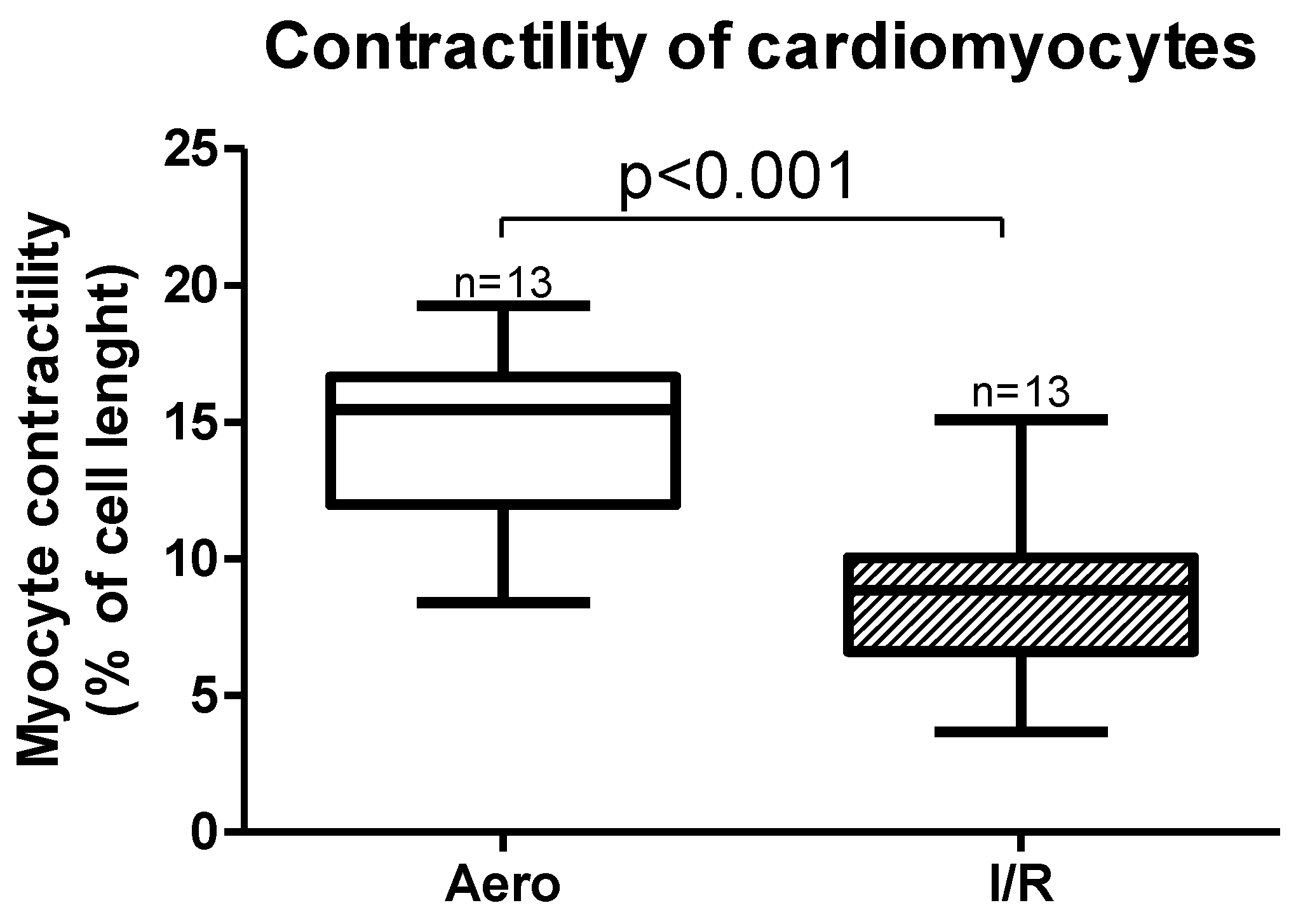
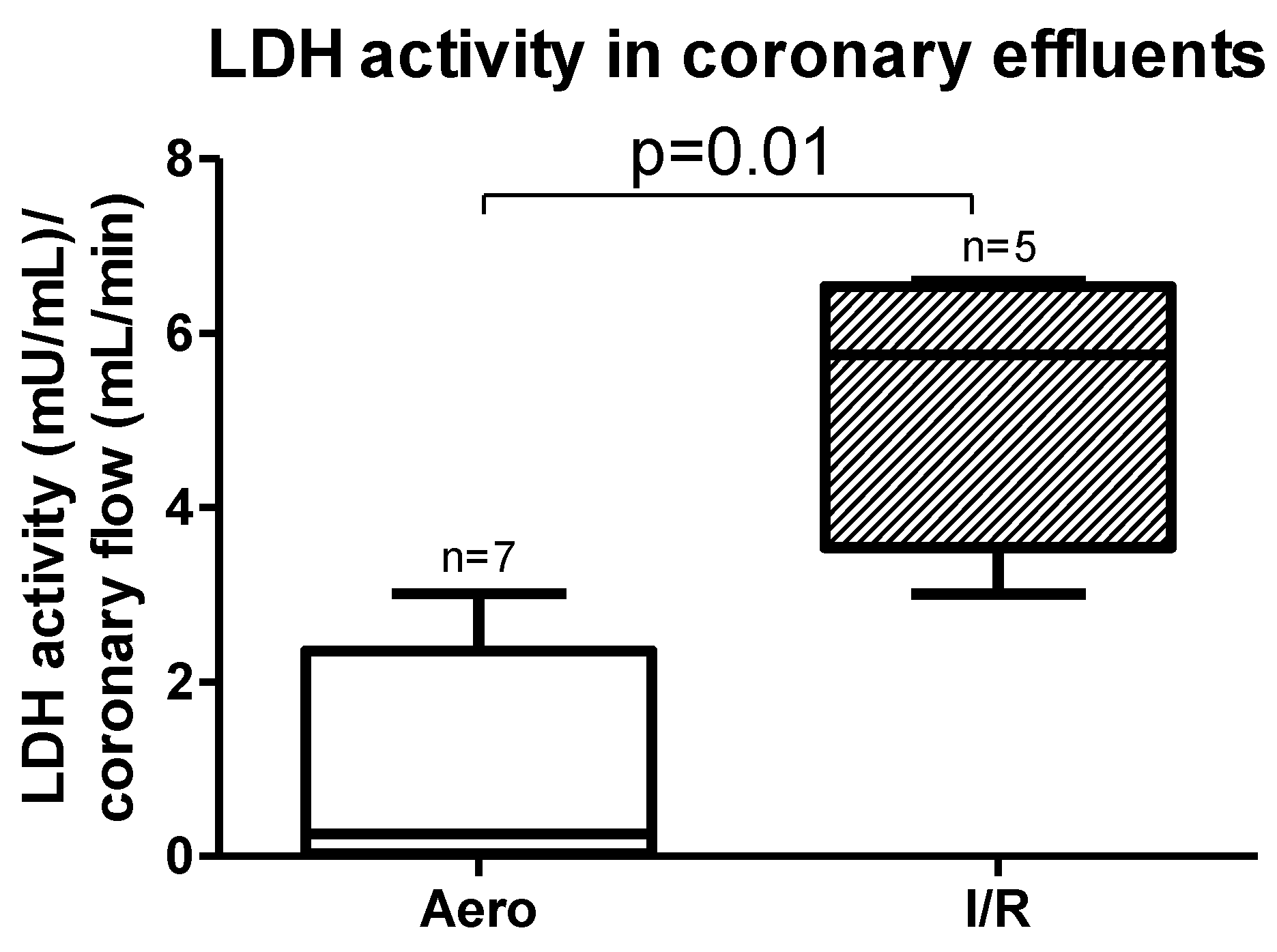
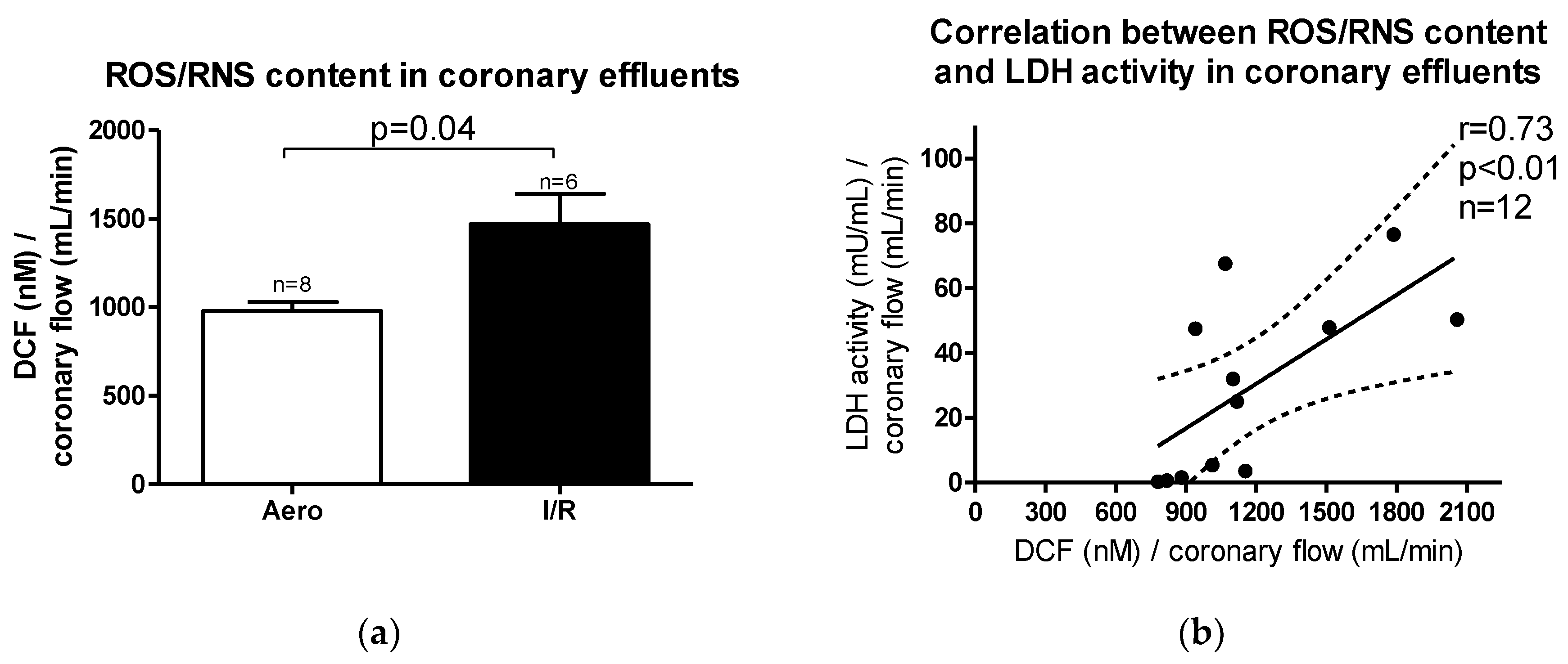

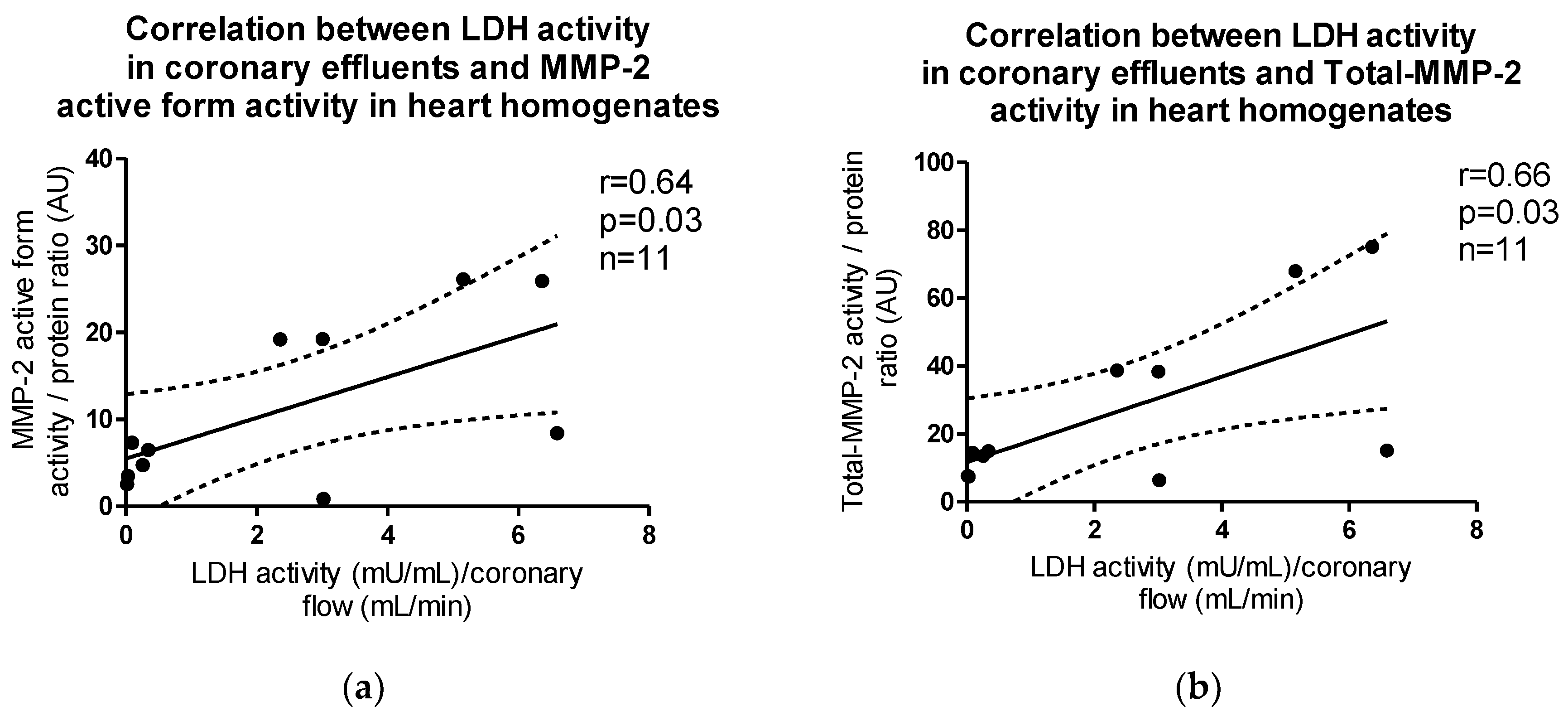

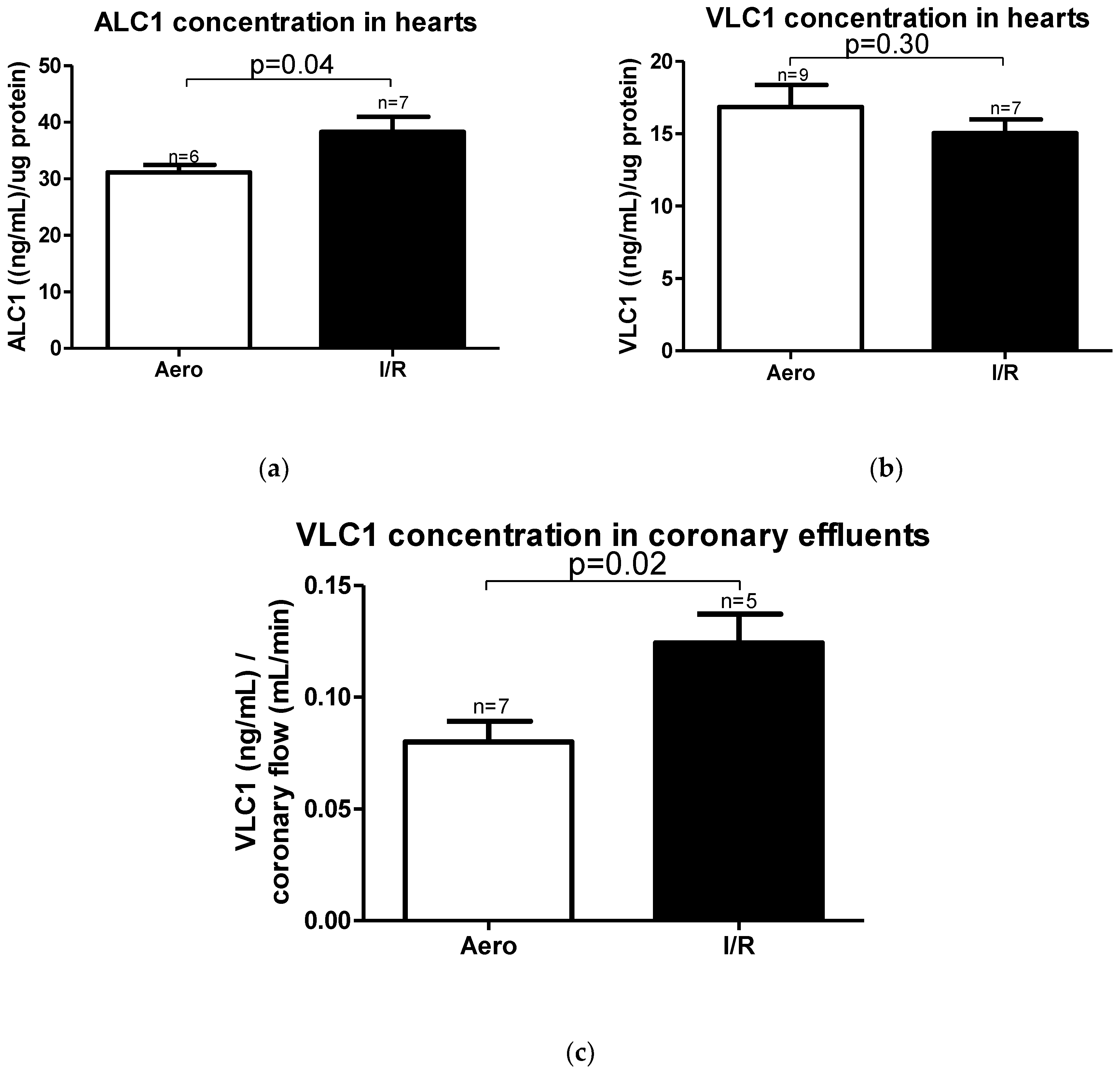
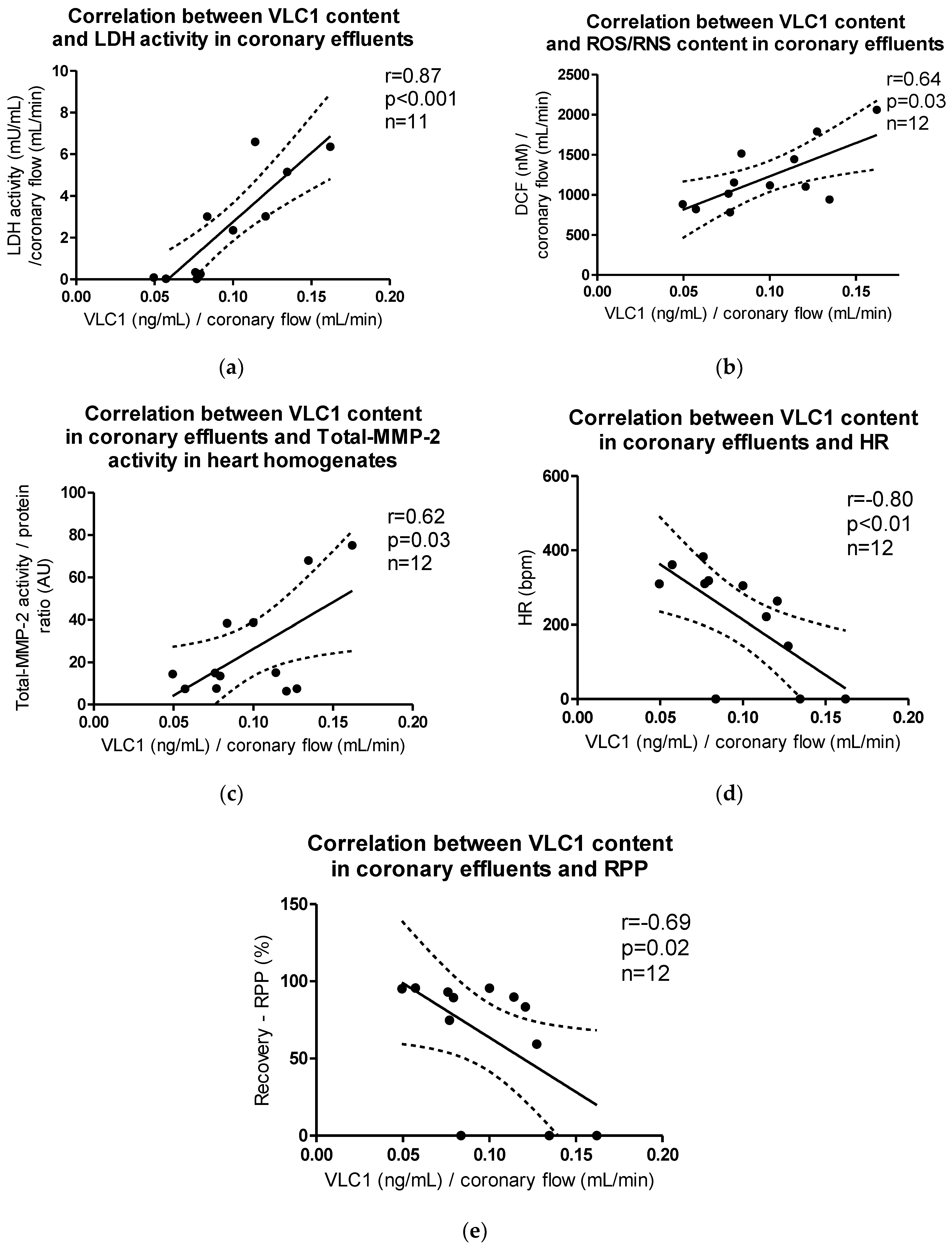
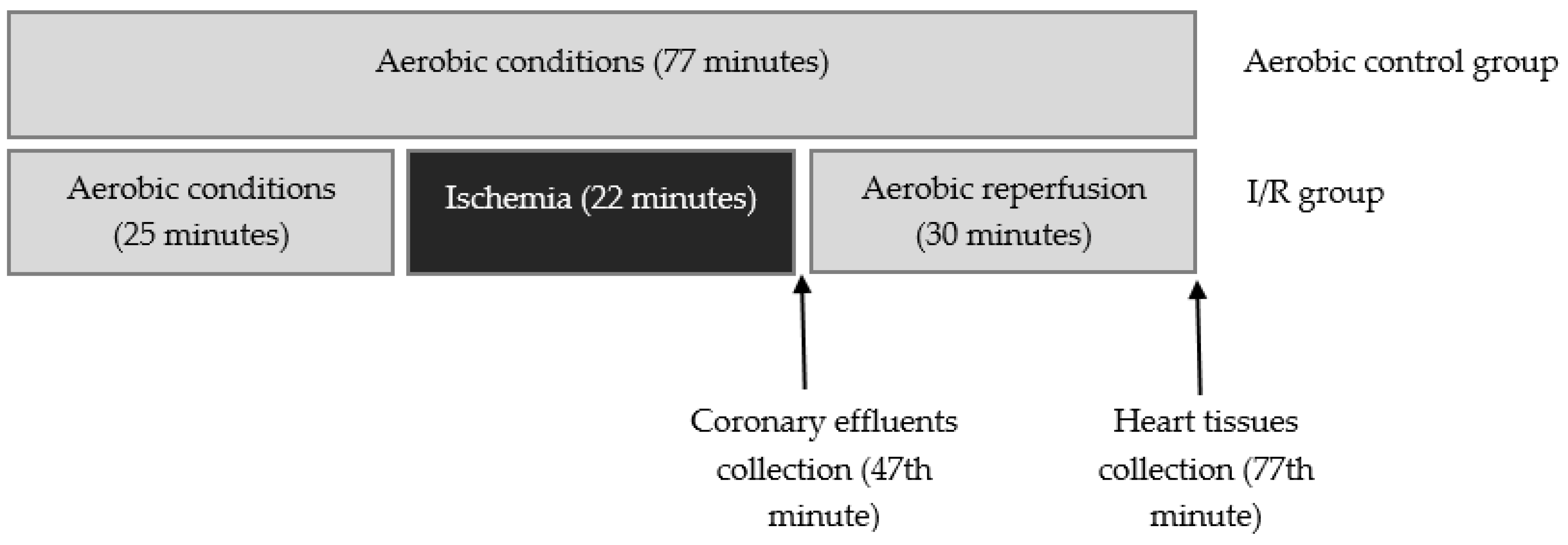
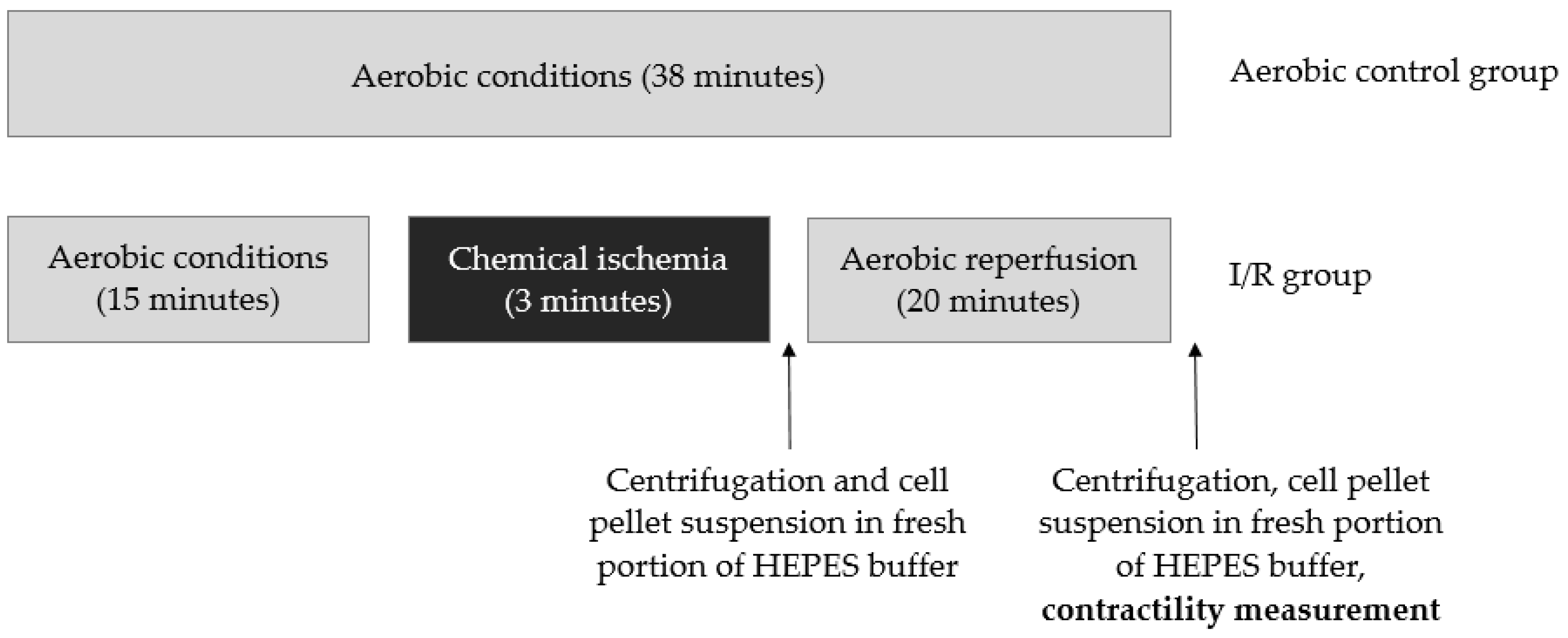
| Parameter | Groups | p-Value d | |
|---|---|---|---|
| Aerobic Group n = 9 | I/R Group n = 7 | ||
| HR (bpm) a | 302.1 ± 17.6 | 51.9 ± 34.6 | 0.0003 |
| LVDP (mm Hg) a | 51.9 ± 5.8 | 18.4 ± 11.9 | 0.0549 |
| CF (mL/min) b | 14.1 ± 1.1 | 7.9 ± 2.2 | 0.0175 |
| Recovery (%) c | 92.6 ± 3.4 | 21.3 ± 14.1 | 0.0012 |
Publisher’s Note: MDPI stays neutral with regard to jurisdictional claims in published maps and institutional affiliations. |
© 2020 by the authors. Licensee MDPI, Basel, Switzerland. This article is an open access article distributed under the terms and conditions of the Creative Commons Attribution (CC BY) license (http://creativecommons.org/licenses/by/4.0/).
Share and Cite
Banaszkiewicz, M.; Krzywonos-Zawadzka, A.; Olejnik, A.; Bil-Lula, I. Tissue Expression of Atrial and Ventricular Myosin Light Chains in the Mechanism of Adaptation to Oxidative Stress. Int. J. Mol. Sci. 2020, 21, 8384. https://doi.org/10.3390/ijms21218384
Banaszkiewicz M, Krzywonos-Zawadzka A, Olejnik A, Bil-Lula I. Tissue Expression of Atrial and Ventricular Myosin Light Chains in the Mechanism of Adaptation to Oxidative Stress. International Journal of Molecular Sciences. 2020; 21(21):8384. https://doi.org/10.3390/ijms21218384
Chicago/Turabian StyleBanaszkiewicz, Marta, Anna Krzywonos-Zawadzka, Agnieszka Olejnik, and Iwona Bil-Lula. 2020. "Tissue Expression of Atrial and Ventricular Myosin Light Chains in the Mechanism of Adaptation to Oxidative Stress" International Journal of Molecular Sciences 21, no. 21: 8384. https://doi.org/10.3390/ijms21218384
APA StyleBanaszkiewicz, M., Krzywonos-Zawadzka, A., Olejnik, A., & Bil-Lula, I. (2020). Tissue Expression of Atrial and Ventricular Myosin Light Chains in the Mechanism of Adaptation to Oxidative Stress. International Journal of Molecular Sciences, 21(21), 8384. https://doi.org/10.3390/ijms21218384





